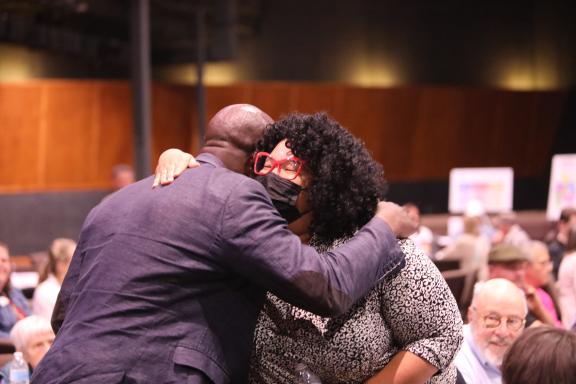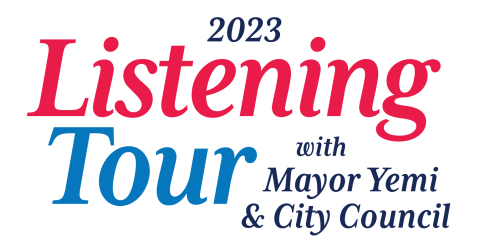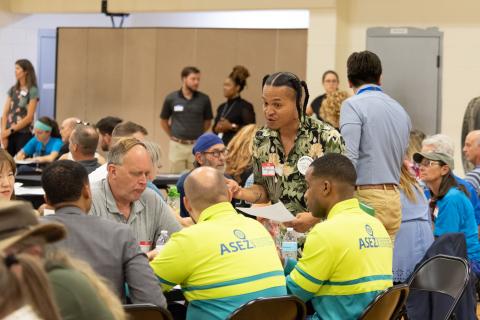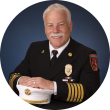Listening Tour Wrap Up
This is the Public Safety Wrap Up Report. Each report includes the following sections:
- “What we heard” - A summary of the key themes heard during the tour and a comprehensive list of feedback received.
- “What we are doing” - A summary of the work the City is currently doing to address the feedback that was shared.
- “What we are planning to do” - This section highlights specific goals and strategies to be implemented in 2024 as part of our Strategic Doing Framework. These are short-term priorities that we feel we can meaningfully address this year.
- “How to get involved” - This section showcases various ways you can learn more about specific topics, continue shaping policy, and get involved to stay engaged in all that is happening in the city.
To see the other areas of feedback we received, please return to the Wrap-Up homepage.
Upload File

What we heard
During the Listening Tour, we heard feedback from you on public safety issues such as:
- Fire mitigation
- Fire evacuation
- Homelessness response
- Mental health response and resources
- Police department staffing
- Training for police, including de-escalation training
What we are doing
Colorado Springs Fire Department
Fire Mitigation
- We continue to grow our mitigation efforts and have been recognized nationally for our programs
- With the help of 2D money, grants and other funding we have increased the amount of treated land and the amount of tonnage removed
- We chipped almost 1,500 acres as of August and removed over 1,000 tons of biomass.
- The Neighborhood Chipping Program serviced 5,409 homes in 2023 and worked in partnership with 143 HOAs/Neighborhoods.
- 85 acres was mitigated in Fishers Canyon open space with specialized equipment.
Fire evacuation
- Working with the Colorado Springs Police Department and the Office of Emergency Management, we continue to work on and update plans, participate in drills and training
- We are utilizing the Zonehaven (now Genasys) software program to push out alerts and provide timely information on active situations
- Through townhalls, media resources and other methods we encourage people to educated, prepared for and aware of evacuation situations
- We have increased participation with the El Paso County-Teller County 911 Authority in the Peak Alerts program and continue to encourage residents to be "COSReady”, know their zone, and provide educational materials around wildfire safety.
- An information card was sent to all 36,000 homes located in the Wildland Urban Interface (WUI), alerting them to living in an increased risk area, with provided links to mitigation, education and evacuation sites. These cards are sent out on a quarterly basis to new residents.
Homelessness response and resources
- We now have two fully funded homeless outreach teams that work with the homeless population. These teams meet the homeless population where they are at to build vital relationships with the goal of getting them into mental health and substance abuse care, and ultimately into long-term housing.
- These teams can track this population through the judicial system, hospital systems, and with other partners to try to provide a consistent care plan.
- The Transition Assistance Program (TAP) ties into the corrections system so if anyone experiencing homelessness is arrested, they can be tracked through the criminal justice system and then provided continued and sustained care during and after they are in the jail system.
- We will continue to grow this program as we can.
- We do respond to fires in the camps when it is dry or when we have cold weather. We will extinguish the fires, but the Homeless Outreach Team team is responsible for removing camps and enforcing laws around these camps.
- In regard to homelessness efforts, CSPD’s Homeless Outreach Team team does a great job of partnering with important stakeholders such as Neighborhood Services, the Springs Rescue Mission and the CSFD Homeless Outreach Program team. These partnerships are critical to the homelessness response.
“As part of our efforts to decrease 911 wait times in our emergency response, we will now proactively reach out to “super users” of the 911 system who call three times in a month or six times in a quarter to see if we can provide them with resources to better address root issues.”
-Randy Royal, CSFD Fire Chief
Colorado Springs Police Department
Responding to the mental health crisis
- We have increased our mental health response units from 4 to 6 teams. The Community Response Teams respond to the more complex incidents while the Alternate Response Teams responds to less critical calls.
- These units have taken what used to be 100% transport to the hospital, to 15% transport. 60% of the time they deescalate the patient on scene and leave them with friends or family. 25% they take them in their vehicle to inpatient or outpatient mental health facilities for care. And 15% have a medical issue where we still transport them to the hospital for treatment.
- We also agree there is need for additional mental health treatment facilities within the community and the state, especially for long term care. This is an issue a priority for regional leaders, including First Lady Abbey Mobolade.
Police staffing shortages
- CSPD has initiated a continuous hiring process. Beginning July, 2023, we will be starting a training academy every 15 weeks for the foreseeable future. Our first two academies have begun, and it appears the numbers are trending in a positive way.
Training for police
- De-escalation training has been a focal point for CSPD. We have already initiated training programs around de-escalation such as the Police Executive Research Forum’s (PERF) Integrating Communication, Assessment and Tactics course (ICAT)., which every sworn police officer is required to be trained in.
- CSPD is also implementing Critical Incident Team (CIT) training that is geared toward mental health, and has techniques that transfer into other de-escalation responses.
What we are planning to do
Colorado Springs is striving to become one of the safest, most prepared, and resilient cities in the nation. More specifically in the 2024 Strategic Doing Framework, our goal is to enhance public safety by increasing community support, funding, innovative programming, and staffing to the City’s first responders.
Expand community and behavioral health public safety programs.
- Explore funding opportunities for additional community and behavioral health programs.
- Explore alternative modes of service delivery to the community.
- Improve community engagement around a unified message.
Leverage and implement technology as a force multiplier to improve public safety efforts.
- In the spirit of transparency, expand open data and dashboarding efforts around public safety.
- Implement speed safety technology and deploy resources to assist with traffic and pedestrian safety.
Establish an action plan to improve community public safety through employee retention and recruitment.
- Prioritize morale improvement among first responders.
- Hire additional police officers through continuous police academies.
- Determine the location and prepare preliminary designs for the CSPD Training Academy.
Expand community outreach and engagement efforts.
- Execute a regional public awareness campaign around wildfire safety.
- Improve community engagement strategies by partnering with community leaders and focusing on positive engagement.
Identify funding for two additional fire stations.
Get involved with Public Safety
Sign up for a “Wildfire Ready” community meeting
- We will be having more neighborhood and community meetings in 2024 and we encourage all to attend these, to ask questions and be provided helpful information.
Sign up for Peak Alerts
- Sign up for Peak Alerts to be notified of emergency situations that are a threat to life or property and are deemed dangerous by public safety officials.
Prepare for wildfire
- Know your wildfire risk. Find out the wildifre risk at your home.
- Submit a request for CSFD’s neighborhood chipping, which assists residents with the disposal of tree branches and hazardous vegetation.
- Create and maintain defensible space around your home.
- Harden your home by using ember-resistant building materials to protect your home.
Support CSPD recruiting efforts
- By getting involved in our police recruiting efforts, you can help with our staffing numbers. Even something as simple as hanging our recruiting posters can help inform the public of our efforts.
Apply to a Neighborhood Watch program
- A Neighborhood Watch is a group of neighbors who are willing to communicate with each other and pass along crime and non-crime-related neighborhood information. Neighborhood Watch groups are educated in crime prevention, trained to observe suspicious activity and report the activity to each other and the police.
Go on a ride-along
- Go on a ride-along with an on-duty CSPD patrol officer to help them understand what an officer goes through.
Get involved in PlayCOS
- Get involved or donate to PlayCOS, a community outreach programs aimed at creating more opportunities for positive interactions between police officers and community members.
Learn more about CSPD practices and data
- Visit CSPD’s Data Hub, which is a public dashboard showing CSPD data, trends, and records on crime, finances, department policies, and more.




